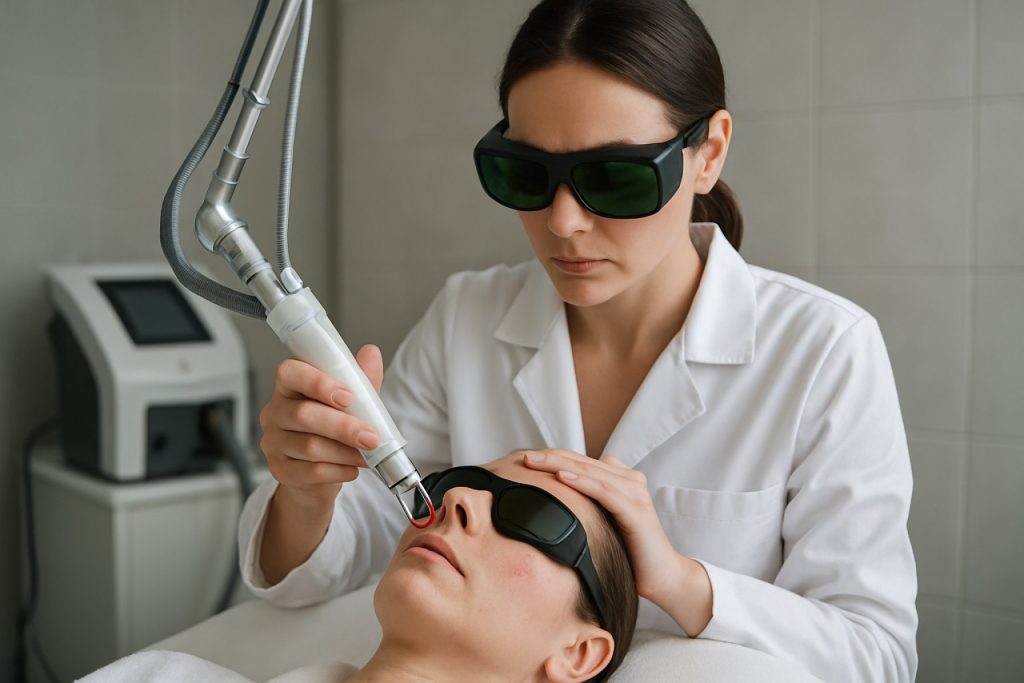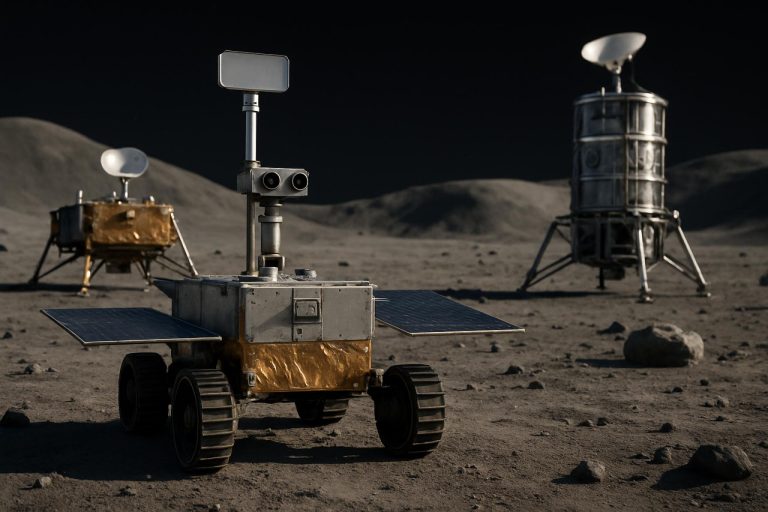
Ablative Laser-Based Dermatological Devices in 2025: Transforming Skin Treatments with Precision and Power. Explore Market Growth, Technological Breakthroughs, and the Road Ahead.
- Executive Summary: Key Insights for 2025 and Beyond
- Market Size and Growth Forecast (2025–2030): CAGR and Revenue Projections
- Technological Innovations: Next-Gen Ablative Laser Systems
- Competitive Landscape: Leading Manufacturers and New Entrants
- Regulatory Environment and Compliance Standards
- Clinical Applications: Expanding Use Cases in Dermatology
- Regional Analysis: North America, Europe, Asia-Pacific, and Emerging Markets
- Key Drivers and Market Challenges
- Strategic Partnerships, M&A, and Investment Trends
- Future Outlook: Disruptive Trends and Long-Term Opportunities
- Sources & References
Executive Summary: Key Insights for 2025 and Beyond
Ablative laser-based dermatological devices are poised for significant growth and innovation in 2025 and the coming years, driven by rising demand for minimally invasive aesthetic procedures, technological advancements, and expanding clinical indications. These devices, which include CO2 and Er:YAG lasers, are widely used for skin resurfacing, scar revision, wrinkle reduction, and treatment of various dermatological conditions. The global market is witnessing robust activity from established medical device manufacturers and new entrants, with a focus on improving efficacy, safety, and patient comfort.
Key industry leaders such as Cynosure, Lumenis, Candela Corporation, and Cutera continue to invest in research and development, introducing next-generation ablative laser platforms with enhanced precision, customizable treatment parameters, and integrated cooling systems. For example, Lumenis has expanded its portfolio with advanced CO2 laser systems designed for both aesthetic and surgical applications, while Cynosure emphasizes user-friendly interfaces and improved safety features in its latest devices.
Recent years have seen a shift toward hybrid and fractional ablative technologies, which combine the benefits of traditional ablative lasers with reduced downtime and lower risk profiles. This trend is expected to accelerate through 2025, as practitioners seek devices that deliver effective results with minimal patient recovery time. Companies like Candela Corporation are at the forefront, offering systems that allow for tailored treatments based on individual patient needs.
Regulatory approvals and clinical studies continue to validate the safety and efficacy of new ablative laser devices, supporting broader adoption in dermatology clinics and medical spas. The U.S. Food and Drug Administration (FDA) and similar regulatory bodies in Europe and Asia are expected to clear additional devices and expanded indications, further fueling market growth.
Looking ahead, the outlook for ablative laser-based dermatological devices remains highly positive. The convergence of patient demand for non-surgical cosmetic solutions, ongoing technological innovation, and increasing practitioner expertise is set to drive double-digit growth rates in key markets. Strategic partnerships, product launches, and geographic expansion by leading manufacturers will shape the competitive landscape, while continued emphasis on safety and clinical outcomes will underpin sustained adoption.
Market Size and Growth Forecast (2025–2030): CAGR and Revenue Projections
The global market for ablative laser-based dermatological devices is poised for robust growth between 2025 and 2030, driven by increasing demand for minimally invasive aesthetic procedures, technological advancements, and expanding applications in both medical and cosmetic dermatology. As of 2025, the market is estimated to be valued in the low-to-mid single-digit billion USD range, with projections indicating a compound annual growth rate (CAGR) of approximately 8–10% through 2030. This growth trajectory is underpinned by rising consumer awareness, greater accessibility to advanced laser treatments, and a growing aging population seeking skin rejuvenation and scar revision solutions.
Key industry players such as Cynosure, Lumenis, Candela Corporation, and Cutera are at the forefront of innovation, consistently launching new ablative laser platforms that offer improved safety profiles, shorter downtime, and enhanced clinical outcomes. For example, Lumenis continues to expand its CO2 and Er:YAG laser portfolios, targeting both hospital and clinic-based practitioners. Similarly, Cynosure and Candela Corporation are investing in R&D to refine fractional ablative technologies, which are increasingly favored for their balance of efficacy and patient comfort.
Geographically, North America and Europe are expected to maintain their dominance in market share through 2030, owing to high adoption rates, established healthcare infrastructure, and favorable reimbursement scenarios for certain dermatological procedures. However, the Asia-Pacific region is projected to witness the fastest CAGR, fueled by rising disposable incomes, a burgeoning medical tourism sector, and increasing investments in private dermatology clinics.
The outlook for the next five years is further strengthened by regulatory approvals and the introduction of multi-application platforms that combine ablative and non-ablative modalities, broadening the addressable patient base. Companies such as Cutera and Candela Corporation are also focusing on expanding their global distribution networks and training programs to support practitioners in emerging markets.
In summary, the ablative laser-based dermatological device market is set for sustained expansion through 2030, with revenue projections reflecting strong double-digit billion-dollar figures by the end of the forecast period. The sector’s growth will be shaped by ongoing technological innovation, expanding clinical indications, and increasing global demand for advanced skin resurfacing and rejuvenation solutions.
Technological Innovations: Next-Gen Ablative Laser Systems
The landscape of ablative laser-based dermatological devices is undergoing significant transformation in 2025, driven by rapid technological advancements and a growing demand for minimally invasive skin treatments. Ablative lasers, which remove the outer layers of skin to stimulate regeneration, remain a cornerstone for procedures such as skin resurfacing, scar revision, and wrinkle reduction. Recent innovations are focused on enhancing efficacy, safety, and patient comfort, while expanding the range of treatable conditions.
One of the most notable trends is the integration of advanced fractional technology into ablative platforms. Fractional ablative lasers, which deliver energy in a pixelated pattern, allow for faster healing and reduced downtime compared to traditional fully ablative systems. Leading manufacturers such as Cynosure and Lumenis have introduced next-generation CO2 and Er:YAG laser systems with customizable settings, enabling practitioners to tailor treatments to individual patient needs. These devices often feature real-time skin temperature monitoring and automated energy delivery adjustments, improving both safety and outcomes.
Another key innovation is the incorporation of artificial intelligence (AI) and machine learning algorithms into device software. Companies like Candela Corporation are developing smart platforms that analyze skin characteristics and recommend optimal treatment parameters, reducing operator variability and enhancing reproducibility. This trend is expected to accelerate as AI capabilities mature, potentially leading to semi-autonomous treatment protocols within the next few years.
Ergonomics and user experience are also being prioritized. Newer systems from DEKA M.E.L.A. S.r.l. and Sciton, Inc. offer intuitive touchscreen interfaces, wireless connectivity for data management, and compact footprints suitable for modern clinical environments. Enhanced cooling mechanisms and contactless delivery options are being integrated to further minimize patient discomfort and risk of post-procedure complications.
Looking ahead, the outlook for ablative laser-based dermatological devices is robust. The convergence of fractional technology, AI-driven customization, and improved ergonomics is expected to drive broader adoption in both established and emerging markets. As regulatory pathways become clearer and clinical evidence accumulates, these next-gen systems are poised to set new standards in skin rejuvenation and scar management, with ongoing R&D likely to yield even more precise and versatile platforms by the late 2020s.
Competitive Landscape: Leading Manufacturers and New Entrants
The competitive landscape for ablative laser-based dermatological devices in 2025 is characterized by a mix of established global manufacturers and innovative new entrants, each vying for market share through technological advancements, regulatory approvals, and strategic partnerships. The sector is driven by increasing demand for minimally invasive aesthetic procedures, particularly in North America, Europe, and parts of Asia-Pacific.
Among the leading manufacturers, Cynosure remains a dominant force, offering a comprehensive portfolio of ablative laser systems such as the SmartSkin CO2 and Icon platforms. The company is recognized for its focus on research and development, frequently updating its product lines to enhance safety, efficacy, and user experience. Lumenis, another major player, continues to expand its UltraPulse and AcuPulse CO2 laser systems, which are widely adopted in both clinical and aesthetic practices. Lumenis is notable for its global reach and robust clinical support infrastructure.
Candela Corporation is also a significant competitor, with its CO2RE system being a staple in ablative skin resurfacing. Candela’s strategy includes leveraging its established distribution channels and investing in practitioner training to maintain its market position. DEKA M.E.L.A. S.r.l., based in Italy, is recognized for its SmartXide series, which integrates advanced scanning and pulse control technologies, catering to both surgical and aesthetic dermatology markets.
In recent years, new entrants and regional manufacturers have begun to challenge the incumbents. Companies such as Fotona are gaining traction with their dual-wavelength Er:YAG and Nd:YAG systems, which offer versatility for both ablative and non-ablative procedures. Asian manufacturers, including Jeisys Medical Inc. and Lutronic Corporation, are expanding their international presence, often competing on price and introducing compact, user-friendly devices tailored for emerging markets.
Looking ahead, the competitive landscape is expected to intensify as new technologies—such as fractional scanning, AI-assisted treatment planning, and improved cooling systems—are integrated into next-generation devices. Strategic collaborations between device manufacturers and dermatology clinics are likely to accelerate product adoption. Additionally, regulatory clearances in the US, EU, and Asia-Pacific will remain a key differentiator, favoring companies with established compliance and clinical validation processes.
Overall, the market for ablative laser-based dermatological devices in 2025 and beyond will be shaped by ongoing innovation, global expansion of established brands, and the emergence of agile new entrants targeting niche applications and underserved regions.
Regulatory Environment and Compliance Standards
The regulatory environment for ablative laser-based dermatological devices in 2025 is characterized by increasingly stringent standards, reflecting both technological advancements and heightened patient safety expectations. Regulatory agencies such as the U.S. Food and Drug Administration (FDA), the European Medicines Agency (EMA), and other national bodies continue to play pivotal roles in shaping the compliance landscape for manufacturers and distributors of these devices.
In the United States, ablative laser devices are classified as Class II or Class III medical devices, depending on their intended use and risk profile. This classification requires manufacturers to submit premarket notifications (510(k)) or premarket approval (PMA) applications, demonstrating substantial equivalence or providing clinical data on safety and efficacy. The FDA has recently emphasized the importance of robust clinical evidence, post-market surveillance, and adverse event reporting for energy-based devices, including ablative lasers. Companies such as Cynosure and Cutera, both major U.S.-based manufacturers, have adapted by investing in comprehensive clinical trials and post-market studies to meet these evolving requirements.
In the European Union, the Medical Device Regulation (MDR) that came into full effect in 2021 continues to impact the sector in 2025. The MDR imposes stricter requirements for clinical evaluation, technical documentation, and post-market surveillance. Notified Bodies are now more rigorous in their assessments, leading to longer approval timelines for new ablative laser devices. Companies such as Lumenis, with a significant presence in both the U.S. and EU markets, have responded by enhancing their regulatory affairs teams and investing in compliance infrastructure to ensure continued market access.
Globally, countries such as Japan, South Korea, and Australia are aligning their regulatory frameworks with international standards, notably those set by the International Electrotechnical Commission (IEC) and the International Organization for Standardization (ISO). This harmonization facilitates cross-border trade but also raises the bar for compliance, particularly regarding device safety, electromagnetic compatibility, and user training.
Looking ahead, the regulatory outlook for ablative laser-based dermatological devices is expected to become even more rigorous. Authorities are likely to introduce new requirements for real-world evidence, digital health integration, and cybersecurity, especially as devices become more connected. Manufacturers such as Candela Corporation and Fotona are proactively engaging with regulators and industry bodies to shape future standards and ensure their products remain compliant in a rapidly evolving landscape.
Clinical Applications: Expanding Use Cases in Dermatology
Ablative laser-based dermatological devices are witnessing a significant expansion in clinical applications as of 2025, driven by technological advancements and growing practitioner expertise. Traditionally, these devices—most notably CO2 and Er:YAG lasers—were primarily used for skin resurfacing and the treatment of deep wrinkles, scars, and certain benign lesions. However, recent years have seen a broadening of their use cases, with new protocols and device refinements enabling safer and more effective treatments for a wider range of dermatological conditions.
One of the most notable trends is the increasing adoption of fractional ablative lasers, which deliver energy in a pixelated pattern, leaving surrounding tissue intact and promoting faster healing. This approach has enabled practitioners to treat not only facial skin but also delicate areas such as the neck, chest, and hands, with reduced downtime and risk of complications. Companies like Cynosure and Lumenis have been at the forefront, offering devices such as the SmartSkin+ and UltraPulse, respectively, which are widely used in clinics for fractional ablative procedures.
Beyond traditional resurfacing, ablative lasers are now being utilized for the management of complex scars, including hypertrophic and keloid scars, as well as for the treatment of actinic keratoses and certain early-stage skin cancers. The precision and depth control offered by modern devices allow for targeted ablation with minimal collateral damage, making them suitable for these challenging indications. Candela Corporation and DEKA M.E.L.A. Srl have developed platforms that support both full-field and fractional modes, further expanding clinical versatility.
Recent clinical studies and practitioner reports indicate a growing interest in combining ablative laser treatments with adjunctive therapies, such as platelet-rich plasma (PRP) or topical drug delivery, to enhance outcomes in skin rejuvenation and scar revision. This combinatorial approach is expected to gain traction in the next few years, as device manufacturers continue to refine energy delivery and cooling technologies to maximize safety and efficacy.
Looking ahead, the outlook for ablative laser-based devices in dermatology remains robust. Ongoing innovation from established manufacturers—including Cynosure, Lumenis, Candela Corporation, and DEKA M.E.L.A. Srl—is expected to further expand the range of treatable conditions, improve patient comfort, and reduce recovery times. As clinical evidence accumulates and device accessibility increases, the role of ablative lasers in dermatology is set to grow, with new protocols and indications likely to emerge through 2025 and beyond.
Regional Analysis: North America, Europe, Asia-Pacific, and Emerging Markets
The global market for ablative laser-based dermatological devices is experiencing dynamic growth, with regional trends shaped by regulatory environments, technological adoption, and demographic factors. As of 2025, North America, Europe, Asia-Pacific, and emerging markets each present distinct opportunities and challenges for manufacturers and healthcare providers.
North America remains the largest and most mature market for ablative laser devices, driven by high consumer awareness, advanced healthcare infrastructure, and a strong presence of leading manufacturers. Companies such as Cynosure, Cutera, and Lumenis are headquartered or have significant operations in the United States, offering a broad portfolio of CO2 and Er:YAG laser systems for skin resurfacing, scar revision, and wrinkle reduction. The U.S. Food and Drug Administration (FDA) continues to play a pivotal role in device approvals, ensuring high safety and efficacy standards. The region is also witnessing increased demand for minimally invasive cosmetic procedures, with ablative lasers being a preferred modality among dermatologists and plastic surgeons.
Europe follows closely, characterized by robust regulatory oversight from the European Medicines Agency (EMA) and the implementation of the Medical Device Regulation (MDR). Key players such as DEKA M.E.L.A. (Italy) and Asclepion Laser Technologies (Germany) are prominent in the region, offering innovative ablative laser platforms. The European market is marked by a growing aging population and increasing demand for aesthetic procedures, particularly in Western Europe. However, reimbursement policies and varying national regulations can impact the speed of adoption in different countries.
Asia-Pacific is emerging as the fastest-growing region, fueled by rising disposable incomes, expanding medical tourism, and a burgeoning middle class seeking cosmetic enhancements. Countries such as South Korea and Japan are at the forefront, with local manufacturers like Lutronic and Jeisys Medical gaining international recognition for their advanced ablative laser technologies. China and India are also witnessing rapid market expansion, supported by increasing investments in healthcare infrastructure and a growing network of aesthetic clinics.
Emerging markets in Latin America, the Middle East, and Africa are gradually adopting ablative laser-based devices, albeit at a slower pace due to economic constraints and limited access to specialized training. Nevertheless, international manufacturers are expanding their distribution networks and offering tailored solutions to address local needs. As regulatory frameworks evolve and awareness of aesthetic treatments increases, these regions are expected to contribute more significantly to global market growth in the coming years.
Overall, the outlook for ablative laser-based dermatological devices remains positive across all regions, with continued innovation, regulatory harmonization, and rising demand for aesthetic procedures driving market expansion through 2025 and beyond.
Key Drivers and Market Challenges
The market for ablative laser-based dermatological devices is experiencing significant momentum in 2025, driven by a confluence of technological advancements, rising aesthetic consciousness, and expanding clinical indications. Ablative lasers, which precisely remove layers of skin to treat wrinkles, scars, and other dermatological conditions, are increasingly favored for their efficacy and versatility. Key drivers and challenges shaping this sector are outlined below.
- Technological Innovation and Product Development: Leading manufacturers are investing heavily in research and development to enhance device safety, efficacy, and user experience. Companies such as Cynosure, Lumenis, and Candela Corporation have introduced next-generation CO2 and Er:YAG laser systems with advanced cooling, fractional technology, and user-friendly interfaces. These innovations reduce downtime and side effects, broadening the appeal of ablative procedures to a wider patient demographic.
- Rising Demand for Aesthetic Procedures: The global surge in demand for minimally invasive and non-surgical cosmetic treatments is a major growth driver. Patients are increasingly seeking solutions for skin rejuvenation, scar revision, and pigmentation disorders, fueling adoption of ablative laser devices in both established and emerging markets. The trend is particularly pronounced in North America, Europe, and parts of Asia-Pacific, where clinics and hospitals are expanding their service offerings.
- Expanding Clinical Indications: Beyond aesthetics, ablative lasers are being utilized for a broader range of dermatological and surgical applications, including the treatment of benign and malignant lesions. This diversification is supported by ongoing clinical studies and regulatory approvals, further solidifying the role of these devices in modern dermatology.
- Regulatory and Reimbursement Challenges: Despite technological progress, the sector faces hurdles related to regulatory compliance and reimbursement. Stringent approval processes in regions such as the United States and the European Union can delay product launches. Additionally, limited insurance coverage for cosmetic procedures may restrict patient access, particularly in cost-sensitive markets.
- Training and Safety Concerns: The effective and safe use of ablative laser devices requires specialized training. Inadequate operator expertise can lead to adverse events, impacting patient outcomes and potentially exposing providers to liability. Manufacturers like Lutronic Corporation and DEKA M.E.L.A. Srl are addressing this by offering comprehensive training programs and support to practitioners.
Looking ahead, the outlook for ablative laser-based dermatological devices remains robust, with continued innovation, expanding clinical applications, and growing patient acceptance expected to drive market growth through the next several years. However, addressing regulatory, reimbursement, and training challenges will be critical to sustaining this momentum.
Strategic Partnerships, M&A, and Investment Trends
The landscape of ablative laser-based dermatological devices in 2025 is characterized by a dynamic interplay of strategic partnerships, mergers and acquisitions (M&A), and targeted investments. These activities are driven by the need for technological innovation, global market expansion, and the integration of complementary capabilities across the value chain.
Major industry players are actively pursuing collaborations to accelerate research and development, enhance product portfolios, and access new geographic markets. Cynosure, a global leader in energy-based aesthetic and medical treatment systems, has a history of forging partnerships with dermatology clinics and academic institutions to advance clinical research and device efficacy. Similarly, Lumenis, renowned for its pioneering work in ablative CO2 and Er:YAG laser systems, continues to collaborate with healthcare providers and technology firms to integrate digital health solutions and improve patient outcomes.
M&A activity remains robust as companies seek to consolidate their positions and diversify their offerings. In recent years, Candela Corporation has expanded its portfolio through the acquisition of complementary laser technologies and intellectual property, strengthening its presence in both North America and Asia-Pacific. The trend is expected to persist, with mid-sized device manufacturers becoming attractive targets for larger firms aiming to capture niche innovations or regional market share.
Investment trends in 2025 reflect a strong appetite for funding next-generation ablative laser platforms, particularly those incorporating artificial intelligence, robotics, and enhanced safety features. Venture capital and private equity firms are increasingly backing startups that focus on miniaturized, portable devices and those that enable teledermatology applications. For example, Sciton, known for its high-performance ablative and fractional laser systems, has attracted significant investment to support R&D in device connectivity and user interface improvements.
Looking ahead, the sector is poised for further consolidation and cross-sector collaboration, especially as regulatory pathways in the US, EU, and Asia become more harmonized. Strategic alliances between device manufacturers and pharmaceutical companies are also anticipated, aiming to develop combination therapies that leverage both laser technology and topical agents for enhanced dermatological outcomes. As the demand for minimally invasive aesthetic procedures continues to rise globally, the competitive landscape will likely see increased activity from both established players and innovative entrants, shaping the future of ablative laser-based dermatological devices.
Future Outlook: Disruptive Trends and Long-Term Opportunities
The future outlook for ablative laser-based dermatological devices in 2025 and the coming years is shaped by rapid technological advancements, evolving clinical applications, and shifting patient expectations. Ablative lasers, which precisely remove layers of skin to treat wrinkles, scars, and other dermatological conditions, are experiencing renewed interest due to improvements in safety, efficacy, and patient comfort.
Key industry leaders such as Cynosure, Lumenis, and Candela Corporation are at the forefront of innovation, investing heavily in research and development to enhance device precision, reduce downtime, and expand indications. For example, the integration of advanced fractional technology and real-time skin monitoring is enabling more personalized treatments, minimizing adverse effects while maximizing results. These companies are also focusing on user-friendly interfaces and automated safety features, making devices more accessible to a broader range of practitioners.
A significant trend is the convergence of ablative laser technology with artificial intelligence (AI) and digital imaging. AI-driven treatment planning and outcome prediction are expected to become more prevalent, allowing practitioners to tailor procedures to individual patient profiles with greater accuracy. This is likely to improve patient satisfaction and expand the eligible patient base, particularly as demand grows for minimally invasive aesthetic procedures with predictable outcomes.
Another disruptive trend is the miniaturization and portability of ablative laser devices. Companies like Lutronic are developing compact systems that can be used in smaller clinics or even in mobile settings, broadening access to advanced dermatological care. This democratization of technology is anticipated to drive market growth, especially in emerging economies where access to high-end medical equipment has traditionally been limited.
Regulatory bodies are also playing a pivotal role in shaping the future landscape. The U.S. Food and Drug Administration (FDA) and the European Medicines Agency (EMA) are streamlining approval pathways for new laser devices, provided they meet stringent safety and efficacy standards. This regulatory support is expected to accelerate the introduction of next-generation devices to the market.
Looking ahead, the global market for ablative laser-based dermatological devices is poised for robust growth, fueled by rising consumer awareness, increasing prevalence of skin disorders, and a growing emphasis on aesthetic wellness. As technology continues to evolve, the sector is likely to witness the emergence of hybrid devices that combine ablative and non-ablative modalities, further expanding therapeutic possibilities and cementing the role of laser technology in modern dermatology.
Sources & References
- Lumenis
- Candela Corporation
- Cutera
- Candela Corporation
- DEKA M.E.L.A. S.r.l.
- Sciton, Inc.
- Fotona
- Jeisys Medical Inc.
- Asclepion Laser Technologies



